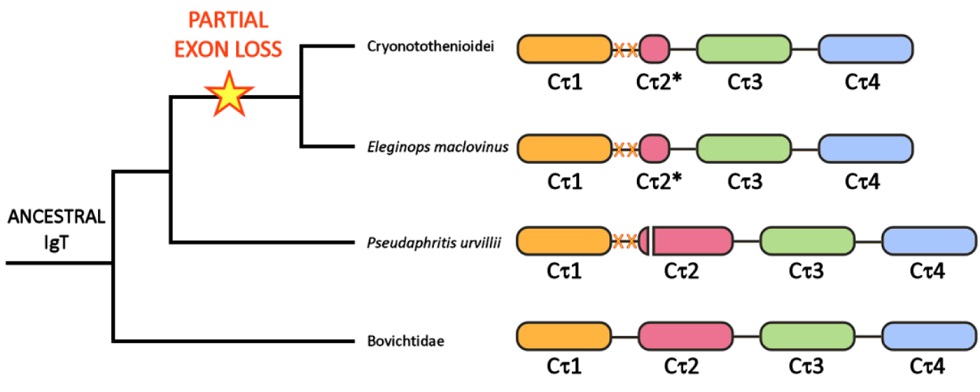Cryonotothenioidea is the main group of fishes that thrive in the extremely cold Antarctic environment, thanks to the acquisition of peculiar morphological, physiological and molecular adaptations. We have previously disclosed that IgM, the main immunoglobulin isotype in teleosts, display typical cold-adapted features. Recently, we have analyzed the gene encoding the heavy chain constant region (CH) of the IgT isotype from the Antarctic teleost Trematomus bernacchii (family Nototheniidae), characterized by the near-complete deletion of the CH2 domain. Here, we aimed to track the loss of the CH2 domain along notothenioid phylogeny and to identify its ancestral origins. To this end, we obtained the IgT gene sequences from several species belonging to the Antarctic families Nototheniidae, Bathydraconidae and Artedidraconidae. All species display a CH2 remnant of variable size, encoded by a short Cτ2 exon, which retains functional splicing sites and therefore is included in the mature transcript. We also considered representative species from the three non-Antarctic families: Eleginopsioidea (Eleginops maclovinus), Pseudaphritioidea (Pseudaphritis urvillii) and Bovichtidae (Bovichtus diacanthus and Cottoperca gobio). Even though only E. maclovinus, the sister taxa of Cryonotothenioidea, shared the partial loss of Cτ2, the other non-Antarctic notothenioid species displayed early molecular signatures of this event. These results shed light on the evolutionary path that underlies the origins of this remarkable gene structural modification.

